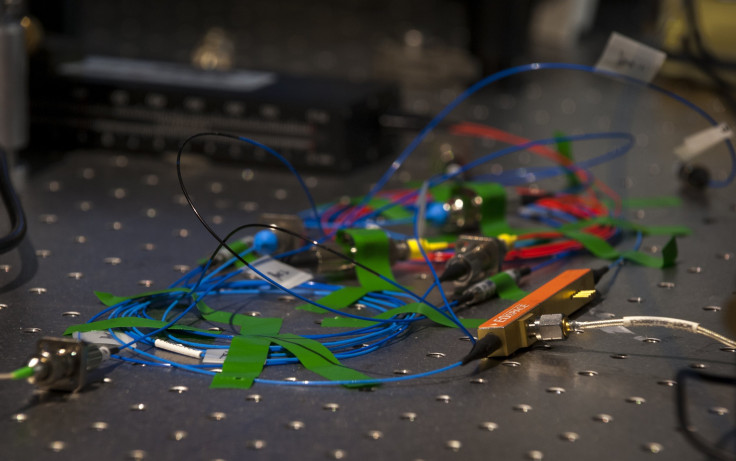Quantum Computing: Researchers Build Converter Capable Of Modifying Properties Of Individual Photons

The field of quantum computing relies on a quantum mechanical phenomenon known as superposition, which allows subatomic particles to assume more than one state at a time. But superposition is only helpful if one can somehow modify the quantum properties of a single subatomic particle — say, a photon — to carry and process the information one needs.
This, however, is easier said than done.
"The task is... more or less this: take a spinning silver coin and move it from one place to another, but along the way quickly and precisely turn it into a gold coin, naturally without tipping it over," Michal Karpinski, a physicist at the University of Warsaw, Poland, explained. "You can easily see that the problem is nontrivial."
In a step toward overcoming this daunting challenge, Karpinski and his colleagues from the University of Warsaw and the University of Oxford have now constructed and tested a converter capable of modifying the quantum properties of individual photons.
This converter, described in a study published this week in the journal Nature Photonics, exploits a physical phenomenon that causes the index of refraction for light in certain crystals to change in the presence of an external magnetic field.
"In essence we process every photon entering the crystal," study co-author Michal Jachura, also from the University of Warsaw, said in the statement. "The efficiency is less than 100 percent not because of the physics of the phenomenon, but on account of hard-to-avoid losses of a purely technical nature, appearing for instance when light enters or exits optical fibers."
This technique is way more precise than the process currently used to modify the quantum properties of individual photons — forcing a photon to interact with a very strong optical pump beam and hoping that doing so would create the modification one is looking for.
"The new converter is not only efficient and low-noise, but also stable and compact: the device can be contained in a box with dimension not much larger than 10 cm (4 inches), easy to install in an optical fiber system channeling individual photons," the researchers said in the statement. "Such a device enables us to think realistically about building, for instance, a hybrid quantum computer, the individual subcomponents of which would process information a quantum way using different physical platforms and phenomena."
© Copyright IBTimes 2024. All rights reserved.





















